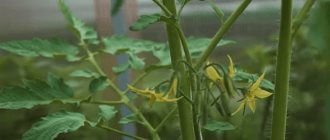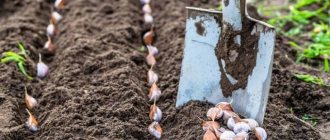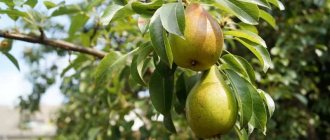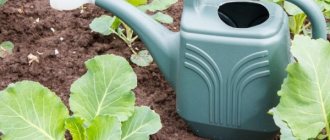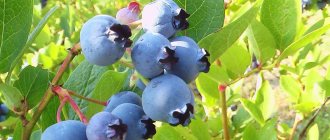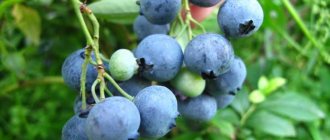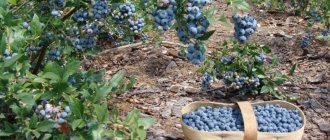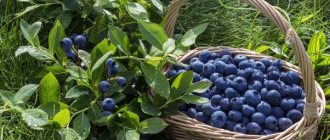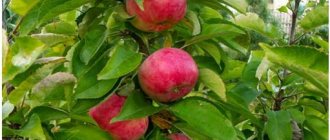How to feed blueberries
Like any garden crop, blueberries need good nutrition for stable and high-quality fruiting. A peculiarity of growing this plant is its need for acidic and moist soils. If you plant blueberries in ordinary soil with a neutral or weak acidity level, such as loam or sandy loam, then they will develop poorly and produce a meager harvest.
The best option for this plant is planting it in peat substrates mixed with pine litter and sand in a ratio of 5:4:1. However, simply planting a shrub in acidic soil is not enough. In the process of growth and development, it needs to organize regular feeding with special means to maintain the required acidity level (3.4–4 pH). Good fruiting of a crop depends on the quality of the soil, in particular, on the presence in it of a certain set of mineral components and chemicals.
Important! To determine the acidity level of the soil, it is recommended to purchase special testers - litmus papers that show the degree of acidity
due to color changes.
Since the soil, even within the same area, has a different composition, it is recommended to artificially introduce the required elements into it. It should be noted that an acidic environment is not needed by blueberries themselves, but by a specific fungus - ericoid mycorrhiza, which lives on the root processes of the plant and helps them absorb nutrients from the soil.
To feed the crop, mineral products based on nitrogen, phosphorus and potassium are used, and in rare cases, organic ones. To increase the acidity of the soil, the tree trunk circle is additionally mulched with coniferous tree needles, pine sawdust, and rotted bark. Any drug is applied in doses, since not only a deficiency of nutrients can harm the bush, but also their excess. It is very important to observe how the plant reacts to this or that fertilizing, and, if necessary, adjust the scheme and dosage of fertilizer application.
Feeding blueberries: main aspects
You already know how blueberries grow and understand that this is a crop that does not require abundant nutrition, as it naturally grows on depleted light soils. It is better to underfeed blueberries than to overfeed them, as excess nutrition will only slow down the development of shoots, and therefore not allow us to harvest a high-quality harvest.
At a certain period, growth phase, the plant needs certain components in greater or lesser quantities.
Otherwise, if fertilizing blueberries is done at random, then, at best, we will simply throw out the fertilizer, be it vermicompost for blueberries, or mineral nutrition, and at worst, we will ruin it completely.
It is important to remember and follow the following recommendations:
- Blueberries are fed throughout the growing season: from April (the moment the buds swell) to the end of October (a month before the onset of negative winter temperatures)
- They fertilize blueberries only after 1 year (1 growing season), after planting the blueberries in the ground, or changing the substrate, then transferring them from a purchased pot to your own.
- A clear dosage of mineral fertilizers, rounded down so as not to overfeed.
- Add certain components (nitrogen, phosphorus, potassium, micro and macro) only when the plant needs them.
- The last application of nitrogen fertilizers is no later than June 15. Later, green young shoots that will actively grow will not have time to prepare for winter and mature, which will provoke freezing, death and provoke the development of fungal and infectious diseases.
Types of fertilizers
To understand what fertilizers to use to feed blueberries, you need to know how a particular element affects the condition of the plant. There are 3 main groups of nutrients: organic, mineral and complex. Let us consider in detail the action of each of them.
Mineral fertilizers
For blueberry bushes, it is preferable to use mineral products based on nitrogen, potassium and phosphorus. The former are used in the initial stage of the growing season, since they are responsible for the growth of the green mass of the plant and the formation of berries on the shoots. To increase the immunity of blueberries and their fruiting, it is advisable to feed them with phosphorus agents. Potassium fertilizers can increase the crop's resistance to pests, diseases, drought and cold.
Important! Not all mineral fertilizers are suitable for blueberries. To feed it, it is strictly forbidden to use chlorine-containing and nitrate-containing preparations.
Nitrogen fertilizers
Nitrogen-containing agents are one of the main ones for feeding blueberries, since they are responsible for the growth of the bush and the formation of berries. With a nitrogen deficiency, the plant slows down its full development, the green mass turns yellow and dries out, the fruits become smaller and thinner. It is recommended to apply these preparations extremely carefully, making sure that they do not get on the foliage.
In diluted form, nitrogen fertilizers are poured under the bush at a distance of at least 15 cm from the trunk. The granules are carefully scattered at some distance from the bush. Typically, ammonium sulfate, ammonium nitrate, ammophos and urea are used to feed blueberries.
When is the best time to fertilize?
Experienced gardeners fertilize shrubs in 3 stages, which fully contribute to the appearance of tasty and juicy berries. The first feeding during the period of vegetative growth of the plant occurs in early spring, when the snow has just melted. Here, preference is given to formulations with a high content of ammonium sulfate, which help to increase the number of buds during swelling. When choosing a complex composition, the fertilizer is selected in a 1:1 ratio of phosphorus and potassium.
Garden blueberries are fed in summer after flowering, during the active formation of ovaries. Ideally, late June or early July. The purpose of the second feeding is to increase the sweetness of the berries and their number. A composition with a high content of potassium and magnesium is suitable for this. A complex formula is widely used, containing potassium, magnesium and additional trace elements in 1:1:1 proportions.
The third feeding of the plant is carried out in August and autumn (provided that October and November are without snow). A complex phosphorus-potassium composition is applied after picking the berries. This promotes the formation of new flowers for the next season. After the third stage, blueberries become more resistant to frost and constant humidity.
Expert opinion
Stanislav Pavlovich
Gardener with 17 years of experience and our expert
Ask a Question
Attention! Regardless of the stage of fertilization, the gardener needs to monitor the acidity level. Acceptable standards are 3.5 – 5 pH.
Is it possible to feed blueberries with fertilizer for conifers?
When adding any nutrients to blueberry bushes, experts recommend following the “do no harm” rule. The plant is very demanding on dosages, so both a deficiency of fertilizers and an excess of them can lead to negative consequences.
The best environment for blueberry growth is acidic, so all means for feeding the bush should be aimed at maintaining a comfortable microclimate. For this purpose, you can use preparations intended for coniferous plants. The fact is that the root system of most coniferous crops, like blueberries, lives in symbiosis with the mycorrhiza fungus, which feels comfortable at an acidity pH of 4.5–6.0.
Granular products intended for conifers are applied to blueberries several times a season. The granules are used dry or dissolved with water, according to the instructions, and poured under the bushes.
Optimal soil for garden blueberries
Garden blueberry (or Highbush blueberry) is a perennial spreading shrub up to 2 meters high. The root system of this plant is superficial, lies no deeper than about 30 cm and has a curious feature - the absence of root hairs. The supply of nutrients is ensured due to the symbiosis of blueberries with a soil mycorrhiza-forming fungus. Therefore, the gardener’s task becomes to take care not only of the plant, but also of its assistant.
When growing blueberries, gardeners sometimes make the following mistakes:
- Deoxidize the soil. This is done, rather, by inertia - similar to what is done when growing other garden crops. However, highbush blueberry is a peat bog plant, and the alkaline reaction of the soil is destructive for it. The optimal pH level is from 4 to 5.
- Choose a high area for planting. This can also be called an action by inertia, since most plants do not like close groundwater. But for its surface root system of blueberries, optimal moisture supply is created at a groundwater level of 50-60 cm. On the other hand, the plant does not tolerate waterlogging. The area must be free from accumulation of rain or melt water.
- Ignore mulching. For mycorrhiza on blueberry roots, mulch is vital. Only this will ensure constant soil moisture and normal air exchange in the upper layers.
Thus, the main requirements that blueberries place on the soil are an acidic reaction and normal humidity. Covering the tree trunk circle with mulch will provide good conditions for the growth of mycorrhiza.
How to water blueberries
Along with fertilizing, gardeners practice watering blueberries with special solutions to acidify the soil.
Among the folk remedies, the following are especially popular:
- Lemon solution. Squeeze juice from 2-3 lemons and mix with 10 liters of water.
- Infusion of sour herbs. Finely chop the leaves and stems of sorrel, sorrel, rhubarb, add hot water and leave to infuse for 2-3 days. Pour the solution under the root.
Did you know? Blueberries have a noticeable rejuvenating effect - due to the presence of a large number of antioxidants, the plant can slow down the aging process of the skin.
Watering with acidic solutions is carried out once every 2–4 weeks, starting from April and ending in September.
Also used to acidify the soil:
- apple cider vinegar - 100 g of the drug per 10 liters of water;
- electrolyte or sulfuric acid solution - 10 ml per 10 liters of liquid.
Soil acidification
If the soil in the area for planting blueberries does not have sufficient acidity (as is most often the case), it must be acidified in advance, a year before planting. This is best done by adding sulfur, which is available in the following forms:
- ground sulfur;
- granulated sulfur;
- colloidal sulfur;
Colloidal sulfur is used to quickly adjust acidity during blueberry growing.
- sulfuric acid (electrolyte).
The first two forms are used when preparing the soil for planting, as they give a prolonged effect. The last two forms are used to quickly adjust acidity, which may be necessary during the growing process.
Granulated or ground sulfur added to the soil to a depth of 10 cm in an amount of 100 g/m2 will increase the acidity of the soil by pH 2.5 per year.
In addition, a slight increase in acidity is achieved by adding ammonium and potassium sulfates.
It is not recommended to use vinegar or citric acid. Their effect is short-lived, but long-term use results in soil salinization and the death of microflora.
Mulching with fresh sawdust, pine needles and crushed coniferous tree bark is a good and gentle way to acidify the soil. You just need to remember to add additional nitrogen, which is spent on rotting the mulch.
Video: how to properly acidify the soil
Blueberry processing
In addition to root feeding, treating the bush with special nutrients can improve the condition of blueberries, their fruiting, and accelerate the growth and development of berries. At the beginning of spring, it is allowed to spray the plant with a weakly concentrated nitrogen solution, which will make it possible to stimulate the growth of green mass.
Don’t forget about treating blueberries for parasites and fungal diseases. To protect the crop, it is recommended to carry out professional spraying with special fungicidal (“ Kuprozan ”, “ Topsin M ”) and insecticidal (“ Aktara ”, “ Aktellik ”) preparations twice a season, in spring and autumn. It is important to consider that failure to comply with the required dosages can provoke the development of various diseases.
Several times a season, you can treat the bushes with a solution of succinic acid, which will protect the bush from pests and diseases, and also saturate it with nutritional components.
So, although blueberries are not very demanding in care, when growing they require high-quality, timely, and, most importantly, dosed feeding. Organic products are absolutely not suitable for feeding the crop, but the plant responds well to mineral preparations with abundant fruiting and high quality berries.
When and where to start preparing blueberries for winter
Fertilizers for radishes
Cultivated blueberries are sensitive to frost, which means that it will not be possible to do without preparatory measures. Some gardeners hope that the winter cold will not affect the plant and make the mistake of leaving the shrub untouched in the fall.
Garden blueberries are native to North America, which is why they are considered a winter-hardy shrub. But dense snow cover is not always the case in Russia, which complicates crop care. Preparing the plant for a long winter should begin soon after harvest; depending on the variety, blue berries ripen in July or August.
Every summer resident who grows blueberries should plan the following activities aimed at restoring the strength of the bush:
- preventative pruning;
- fertilization;
- bush propagation.
Thus, early varieties need care already in mid-July, and late varieties of blueberries are recommended to be prepared for wintering in the last days of August.
Signs of nutritional deficiency
A lack of nutrients is determined by the appearance of the bush. The following signs indicate this:
- slow emergence of new shoots;
- yellowing or redness of the leaves (sometimes the midrib remains green);
- drying out of new shoots;
- the appearance of spots on leaf plates and their deformation;
- shedding of flowers and berries.
All these signs can also be caused by parasites or infectious diseases, so before fertilizing, you need to check blueberries for diseases.
Signs of micronutrient deficiency
If blueberries lack one or another microelement, it will immediately become noticeable by its appearance. Namely:
- nitrogen - there is a slowdown in the growth of the bush, the foliage turns yellow, and sometimes even takes on a red tint;
- phosphorus - foliage takes root to the stem, changing color to purple;
- calcium - the leaves become deformed and turn yellow at the edges;
- potassium - the foliage dies, and the tops of young shoots dry out;
- magnesium - leaves everywhere take on a red tint;
- boron - shoot growth stops, the foliage becomes blue;
- iron - the foliage turns yellow into a green mesh;
- sulfur - the leaves turn gray, and then may turn white.
Feeding at different stages
Each period of a bush’s life requires the introduction of substances that are necessary at this stage of development. It is this approach that can bring maximum effect and ensure a good harvest.
Upon landing
Fertilizing begins at the soil preparation stage. There are 2 main questions: what fertilizers are needed when planting blueberries and in what cases.
Indeed, it is not always necessary to add complexes to the soil. There is no need to do this if the planting hole is filled with special soil for azaleas, rhododendrons and hydrangeas, since it already contains everything necessary. There are specially created substrates for this crop; they also contain all the nutrients for good growth and fruiting. It is more difficult to find them on the open market, but you can easily order them online.
Another exception is planting in the fall. At this time, the active elements will be harmful to the bush, as they will provoke it into activity, which is not at all necessary after the end of the growing season. Such specimens will be fertilized for the first time next spring, and not at planting.
When planting in spring, the preparation requirements are stricter. Red peat is brought into the pit; it is best to buy prepared peat. It does not contain weed seeds, which will make maintenance easier during the first season. It must be remembered that peat is a nutrient-poor substrate, so you need to add phosphorus and potassium. This is done using superphosphate and potassium magnesium. The application rate for these fertilizers for blueberries is 100 g of each substance per planting hole.
In addition, you can reduce the acidity, if it was not low enough at first, using a sulfur-based acidifier. It is added in an amount of 250-300 g per planting hole. In order for the bush to grow faster, it is recommended to use a rooting agent, for example, Radifarm.
in spring
The functions of fertilizer for blueberries in spring are as follows:
- rapid recovery after winter hibernation;
- active growth of new shoots;
- the appearance of a large number of leaves.
Since the first fertilizing is carried out immediately after the snow cover melts, all fertilizers are applied either in the form of granules or in dissolved form. The option of foliar applications is excluded.
The element that is emphasized in the spring is nitrogen. It is he who helps the rapid growth of the crown. The first approach is carried out until the buds swell. To ensure that the acidity of the soil does not change, first scatter an acidifier, and only then water the root zone with a solution of azofoska in the amount of 50 g per bucket of water under the bush.
In May, the procedure is repeated, but the amount of azofoska is reduced to 30 g.
In summer
During this season, you can do without adding compounds if there are no signs of micronutrient deficiency in the crop. But if the bushes look stunted, produce few buds, or have recently been cured of an infectious disease, then they may be weakened. The composition of fertilizer for blueberries during this period is different: now the emphasis is on potassium and phosphorus. Potassium promotes better ripening of berries and improves their taste. In addition, it improves enzyme activity and activates photosynthesis.
Phosphorus improves resistance to negative factors and increases plant immunity. It is especially important before flowering and in preparation for wintering. On the contrary, less nitrogen is needed during this period, since the main work on increasing the green mass has already been done in the spring.
In summer, not only the root method of application is used, but also leaf application. In this case, the concentration of the solution should be lower, and spraying should be carried out before sunrise or after sunset, so as not to cause burns to the leaf plates. They also use embedding granules in the soil to a depth of 5 cm. Phosphate rock is recommended at a rate of 250 g per m2. Potassium sulfate or magnesium sulfate is also used.
Special complexes
In addition to preparations that are used for all plants and crops, there are complex fertilizers developed specifically for blueberries. They are good because they take into account the needs of this particular crop, provide it with the necessary macroelements, help acidify the soil and introduce microelements or vitamins. All this has a positive effect on mycorrhiza and the plant itself, which is reflected in improved immunity, rapid growth of vegetative mass and increased fruiting.
Agronomists advise using the following special complexes for blueberries:
- Nitrate-free granules. The advantage is slow dissolution, which prevents it from being washed out with rain into the lower layers of the soil. From mid-April to mid-August, apply 3 times at monthly intervals. In addition to macroelements, the composition includes microelements: magnesium, zinc, iron, etc. They prevent yellowing of leaf blades throughout the season.
- Bona Forte . The principle of prolonging action is used. This means that the complex can be applied just once per season, after which the nutrients will last until next year.
- Good power (Yagodnoe No. 2). Liquid concentrate.
- Substral American Blueberry 2in1. Contains mineral and organic components, therefore it completely covers the plant’s nutritional needs.
- Lifdrip . Dry water-soluble composition that contains basic nutrients and microelements. There are no heavy metals or chlorine among the ingredients. All components are in the form of chelates, which makes them as easy to absorb as possible.
- Yara Mila . A balanced product that provides a rapid increase in vegetative mass makes the plant more resistant to diseases and adverse weather conditions. The vitamin composition and nutritional value increase after its use.
In addition to special complexes, you can use those designed for crops with similar needs in terms of soil and nutrition. For blueberries, garden fertilizers for rhododendrons, hydrangeas and azaleas are successfully used.


